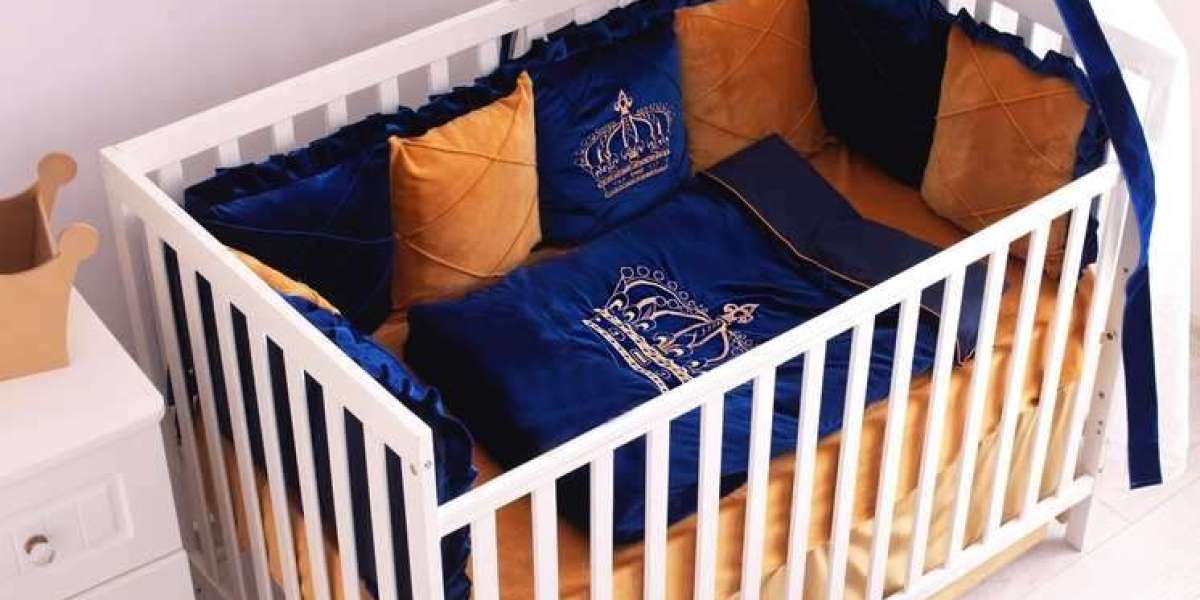When planning a nursery, you’re not just designing a room for a baby; you’re creating the first chapter of a childhood home. Amidst the choices of colors and themes, savvy parents look for furniture that is not only beautiful and safe but also smart and sustainable. Enter the convertible crib to full bed, one of the most popular and practical innovations in nursery furniture.
A convertible crib is a single piece of furniture designed to evolve with your child. It begins as a safe, enclosed crib for your infant, and then, through a series of transformations, it becomes a toddler bed, a daybed, and ultimately, a full-size bed that can last through their teenage years. It's a promise of consistency and value.
But is it the right choice for your family? What do terms like "4-in-1" really mean? And what’s the secret to ensuring a smooth transition from crib to full bed years down the line? This complete guide will answer all your questions, empowering you to make a choice that will serve your family for years to come.
What is a Convertible Crib? Decoding the "X-in-1" System
The term "convertible" refers to the crib's ability to transform. The numbers—like "3-in-1" or "4-in-1"—simply tell you how many different bed configurations are possible.
3-in-1 Convertible Crib: This type typically transforms through three stages, all using the original crib mattress:
Crib: The standard, secure enclosure for an infant.
Toddler Bed: One side of the crib is removed and often replaced with a low guardrail to prevent tumbles.
Daybed: The toddler guardrail is removed, leaving a small, sofa-like bed with three sides, perfect for a playroom or young child's room.
4-in-1 Convertible Crib: This is the most versatile option and the one that transforms into a full bed. It includes all the stages of a 3-in-1, plus the final, most significant conversion:
Crib
Toddler Bed
Daybed
Full-Size Bed: The headboard and footboard of the original crib are detached and then reattached to a separate, standard full-size metal bed frame.
The Long-Term Investment: Pros and Cons of a Convertible Crib
A convertible crib is a significant purchase. Understanding its benefits and potential drawbacks is key to making an informed decision.
The Advantages (Pros)
Cost-Effectiveness: While the initial cost may be higher than a standard crib, you are effectively pre-purchasing a toddler bed and a full-size bed frame. This can lead to significant savings over nearly two decades.
Style Consistency: The crib you choose will set the design tone for your child’s room for years. The headboard of your baby’s crib becomes the headboard of their teenage bed, ensuring a cohesive look.
Sentimental Value & Comfort: For many children, transitioning between bed stages can be emotionally challenging. Keeping the same familiar headboard and frame provides a comforting sense of continuity that can make these changes easier.
Sustainability: By using one piece of furniture for multiple stages of life, you are reducing waste and making a more environmentally conscious choice.
The Considerations (Cons)
The Conversion Kit Conundrum: This is the most critical point to understand. The parts needed to convert the crib into a full bed—usually two long metal or wooden rails and mattress support slats—are almost always sold separately.
Pro Tip: Buy the full-bed conversion kit at the same time you buy the crib. Crib models are discontinued frequently. If you wait several years to buy the kit, it may no longer be available, rendering the "full bed" feature useless.
Wear and Tear: This piece of furniture will be used for many years. Teething marks, scratches from toys, and general dings are inevitable. The pristine crib you buy for your baby will show signs of a well-loved childhood by the time it becomes a full bed.
Style Lock-In: The charming, baby-centric style you adore for your nursery will become the style of your pre-teen’s room. It's wise to choose a timeless, classic design with clean lines that can adapt to changing tastes over the years.
Navigating the Four Stages of Conversion
The journey from crib to full bed is a series of simple but important transformations.
Stage 1: The Crib
In its initial form, a convertible crib must meet all U.S. Consumer Product Safety Commission (CPSC) standards for infant safety. This includes fixed sides (drop-side cribs are banned), specific slat spacing, and a snug mattress fit. Look for a JPMA (Juvenile Products Manufacturers Association) certification seal as an extra assurance that the crib has been independently tested for safety.
Stage 2: The Toddler Bed
When to Convert: The time to transition is when your child begins to attempt climbing out of the crib, or when they reach approximately 35 inches in height. How it Works: You will typically remove one of the main slatted sides of the crib. A separate, low safety rail (the toddler guardrail) is then bolted into place. The original crib mattress is still used at this stage. Note that this toddler rail is also often sold separately.
Stage 3: The Daybed
This is the simplest conversion. By simply removing the toddler guardrail, you are left with a three-sided bed. It’s a great intermediate step that gives your child more independence while still feeling enclosed and secure. It continues to use the crib mattress.
Stage 4: The Full-Size Bed
This is the grand finale. How it Works: You will disassemble the remaining parts of the daybed, leaving you with the two main end panels—the headboard and footboard. Using the full-bed conversion kit, you will attach these two pieces to the new bed rails, creating a frame. You then add a standard full-size mattress and a box spring or foundation to complete the bed.
Your Essential Shopping List: Planning for the Future Today
To ensure you have everything you need, think of it in two phases:
Phase 1: At the Time of Crib Purchase
[ ] The 4-in-1 Convertible Crib itself.
[ ] A high-quality, firm crib mattress.
[ ] The Full-Bed Conversion Rails (CRITICAL).
[ ] The Toddler Bed Guardrail (if sold separately).
Phase 2: For the Full-Bed Conversion (Years Later)
[ ] A standard full-size mattress.
[ ] A full-size box spring or foundation (check the conversion kit instructions for requirements).
Conclusion: A Bed Built for a Lifetime of Memories
The convertible crib is more than just a piece of furniture; it’s a silent witness to your child's growth. It’s the backdrop for their first smiles, the safe space for their toddler dreams, and the familiar comfort they return to after a long day at school. By planning ahead and understanding the process—especially the importance of securing the conversion kit early—you are making a smart, sentimental, and sustainable choice. You are investing in a bed that is truly built for a lifetime of memories.
Frequently Asked Questions (FAQs) About Convertible Cribs
1. What is the main difference between a 3-in-1 and a 4-in-1 crib? A 3-in-1 crib typically converts from a crib to a toddler bed and then a daybed, all using the crib mattress. A 4-in-1 crib includes those three stages plus a final conversion into a full-size bed frame, which requires a new mattress.
2. Do convertible cribs come with the parts needed for all conversions? Almost never. The toddler guardrail and, most importantly, the full-bed conversion rails are typically sold separately. It is crucial to buy these at the same time as the crib.
3. When should I convert the crib to a toddler bed? You should transition when your child starts trying to climb out, or once they reach about 35 inches in height, whichever comes first. This is a key safety measure to prevent falls.
4. What size mattress do I need for the final, full-bed stage? You will need a standard U.S. full-size mattress, which typically measures 54 inches wide by 75 inches long.
5. Are convertible cribs as safe as standard, non-convertible cribs? Yes. As long as they are JPMA certified and assembled correctly according to the manufacturer’s instructions, they meet the same stringent CPSC safety standards as standard cribs.
6. Can I use the crib mattress for the toddler bed and daybed stages? Yes. The crib mattress is used for all stages leading up to the full-size bed conversion.
7. Is it difficult to convert the crib? Most conversions are straightforward and can be done with simple household tools like an Allen key (often included) and a screwdriver. Always keep the instruction manual in a safe place.
8. What happens if I wait to buy the conversion kit and it's discontinued? Unfortunately, you will likely be unable to convert the crib to a full bed as intended. Universal conversion kits exist, but they may not match the color or fit the hardware of your specific crib model.
9. Do I need a box spring when I convert to a full bed? Usually, yes. Most conversion rail kits are designed to support a standard mattress and box spring combination. Always check the specific instructions for your kit.
10. Is a convertible crib a good investment? For most families, yes. It saves you the cost of buying separate beds later on and provides a comforting, familiar piece of furniture for your child as they grow. Its value is maximized when you plan ahead and purchase the necessary conversion kits upfront.



